
ISAAC'S FAVORITE BLT
01/28/21 — Ada Broussard
 Recipe & Photos by Heydon and Isaac
Recipe & Photos by Heydon and Isaac
This recipe is a classic in our kitchen and one that Isaac loves to create and eat every single time. When the scent of bacon wafts through the air in our little casita, well, needless to say, I get excited to chow down, too. We received the most epic head of lettuce in our CSA box this week and wanted to showcase it in something besides a salad. Thus, Isaac’s favorite BLT was one of our dinners this week. Integrating high-quality vegetables in those everyday snacks and simple meals like the sandwich-for-dinner can really revolutionize the way you eat and truly heightens the caliber of your meals, or at least I think so. We are definitely looking forward to the JBG summer tomato iteration of this BLT, but in the meantime, we utilized some off-season orange cherry tomatoes.
Ingredients:
- 1 Red Onion
- A handful of cherry tomatoes (or one big tomato, use what you have)
- 1 Glorious head of JBG lettuce
- Bunch of Oregano
- Olive Oil
- Salt and pepper
- Bacon
- Mustard
- Mayo
- Bread
How to: Get a bread you like, preferably something fairly soft and thinly sliced. According to Isaac, “it ain’t about the bread for this sammy”. Slice red onion paper thin and loosely chop 2 to 3 beautiful JBG lettuce leaves. Slice tomato (JBG is not in season so Isaac used some sweet yellow cherry tomatoes) into fourths. And now, for the *secret ingredient* to Isaac’s personal favorite BLT - “if you’ve never had it this way, well, get ready for your mouth to explode!” - loosely chop a few sprigs of FRESH oregano.
Set all ingredients on a cutting board and drizzle in olive oil. Lightly grind salt and pepper on ingredients as well. Bake 6 pieces of Kiolbassa hickory bacon in the oven at 350-375 until crispy. Get 2 bread slices, spread a small amount of Colman’s mustard on each piece, and then spread a healthy amount of either Hellman’s or Duke's Mayo on each piece.
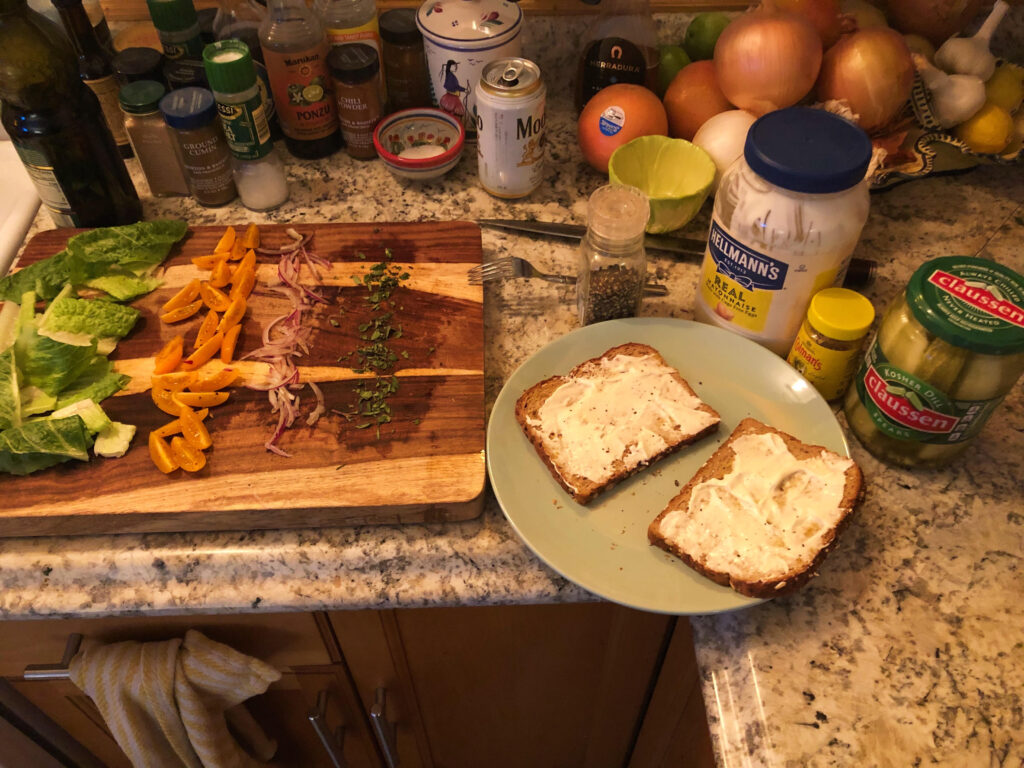
Begin the stack: red onion and a few punches of oregano, then lettuce, then tomato. Hit this layer with a little grind of pepper. Then add 2 or 3 pieces of bacon and repeat. On the second stack of bacon place them in the opposite direction (if horizontal the first time - stack vertical on the second layer). Cut the sandwich in half or diagonally, whatever gets you going, and ENJOY! Oh, and pair with some Claussen dill pickle spears for good measure. Yum.
CSA BOX CONTENTS WEEK OF JAN 25TH
01/22/21 — Farm
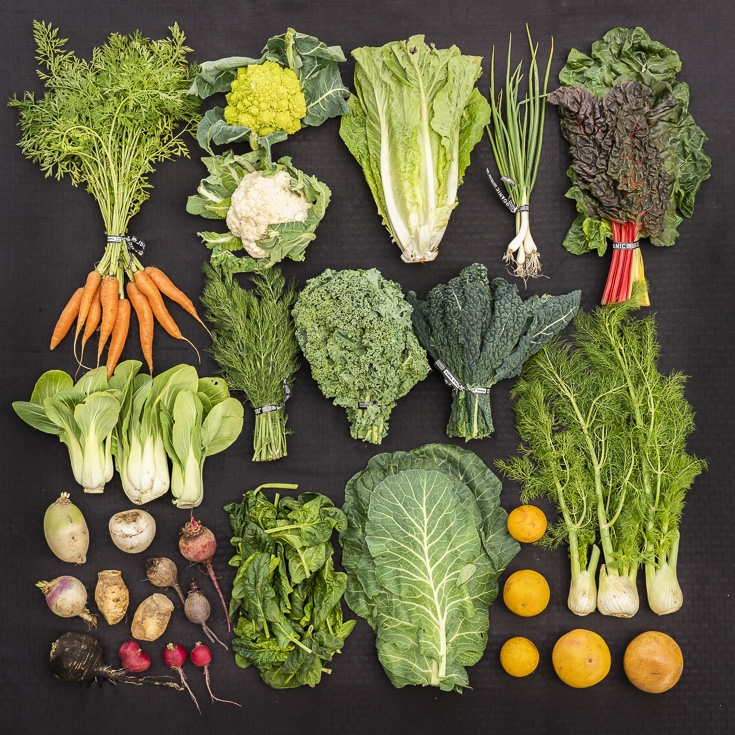 CSA Box Contents Week of Jan 25th
CSA Box Contents Week of Jan 25th
Individual: Cauliflower, Romaine, 2lb Carrot, Roasting Bag, Dinosaur Kale
Small: Cauliflower, Romaine, Carrot, Bok Choy, Swiss Chard, Beet, Dinosaur Kale
Medium: Fennel, Cauliflower, Roasting Bag, Carrot, Romaine, Onion, Farmer's Choice Herb, Baby Bok Choy, Swiss Chard, Dinosaur Kale
Large: Fennel, Cauliflower, Roasting Bag, Carrots, Onions, Farmer's Choice Green, Farmer's Choice Herb, Baby Bok Choy, Collard Greens, Dinosaur Kale
PHOTOS FROM THE FARM: 1.22.21
01/22/21 — Ada Broussard
Did you know that if you join our CSA program by the end of this month, the first box is free? Simply enter JOINTHEFAM at checkout. And if you're curious what exactly goes into making our CSA boxes, take a gander at this week on the farm. There are beet, carrot, and cabbage clues.
![]() These golden beet greens are looking top notch. We love a bunched beet - it's truly two vegetables for the price of one. Photo by Scott David Gordon.
These golden beet greens are looking top notch. We love a bunched beet - it's truly two vegetables for the price of one. Photo by Scott David Gordon.
![]() If the quality of the greens is less desirable, beets get "topped" and harvested in bulk. Luckily, a few insect holes in the greens doesn't bother the roots one bit. Photo by Scott David Gordon.
If the quality of the greens is less desirable, beets get "topped" and harvested in bulk. Luckily, a few insect holes in the greens doesn't bother the roots one bit. Photo by Scott David Gordon.
![]() Purple top turnips in all shapes and sizes. Photo by Scott David Gordon.
Purple top turnips in all shapes and sizes. Photo by Scott David Gordon.
![]() Collard fans. Photo by Scott David Gordon.
Collard fans. Photo by Scott David Gordon.
![]() Did you read last week's blog post on brassicas? DId you know that a head of cabbage is just an enlarged terminal bud? Photo by Scott David Gordon.
Did you read last week's blog post on brassicas? DId you know that a head of cabbage is just an enlarged terminal bud? Photo by Scott David Gordon.
![]() Speaking of Brassicas, believe it or not, this dino kale and a head of green cabbage are actually the same species of plant. Whereas the cabbage was selectively bread for a large bud, kale was bred for large leaves. Photo by Scott David Gordon.
Speaking of Brassicas, believe it or not, this dino kale and a head of green cabbage are actually the same species of plant. Whereas the cabbage was selectively bread for a large bud, kale was bred for large leaves. Photo by Scott David Gordon.
![]() The kale that keeps on giving. These kale plants have been harvested off of throughout the whole fall and winter season, and there is plenty more to go. Photo by Scott David Gordon.
The kale that keeps on giving. These kale plants have been harvested off of throughout the whole fall and winter season, and there is plenty more to go. Photo by Scott David Gordon.
![]() Cabbage patch women. Photo by Scott David Gordon.
Cabbage patch women. Photo by Scott David Gordon.
![]() Vicente uses the John Deere to skillfully stack the bulk bins of cabbage before loading them into the cooler. Photo by Scott David Gordon.
Vicente uses the John Deere to skillfully stack the bulk bins of cabbage before loading them into the cooler. Photo by Scott David Gordon.
![]() So orange, they almost look fake. Photo by Scott David Gordon.
So orange, they almost look fake. Photo by Scott David Gordon.
![]() Ginger in ultimate carrot concentration. Photo by Scott David Gordon.
Ginger in ultimate carrot concentration. Photo by Scott David Gordon.
![]() CSA box dreams. Photo by Scott David Gordon.
CSA box dreams. Photo by Scott David Gordon.
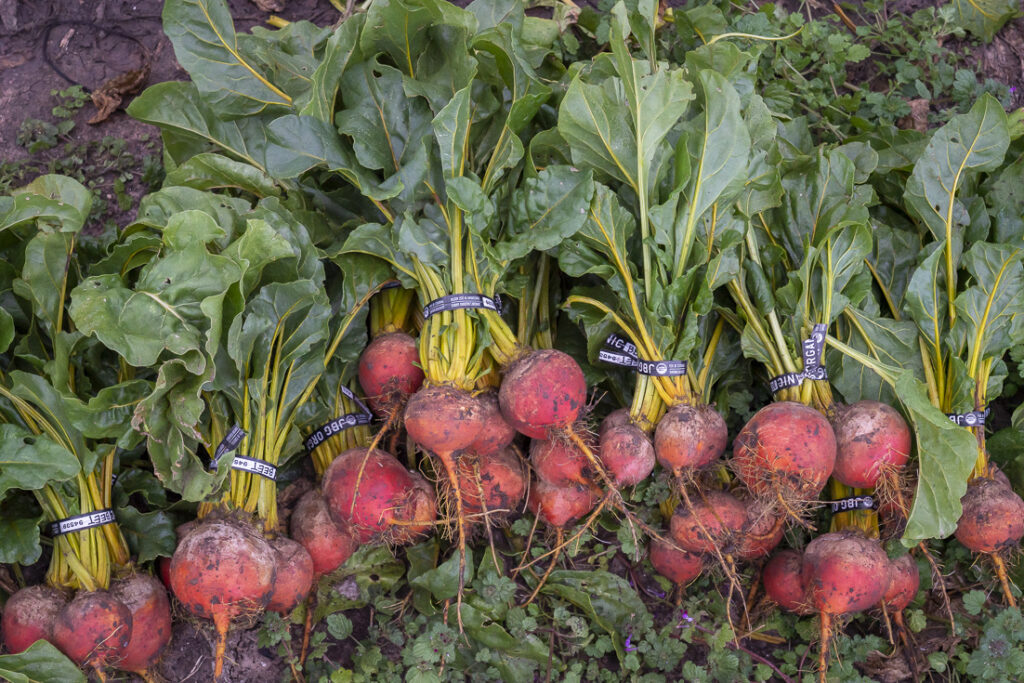 These golden beet greens are looking top notch. We love a bunched beet - it's truly two vegetables for the price of one. Photo by Scott David Gordon.
These golden beet greens are looking top notch. We love a bunched beet - it's truly two vegetables for the price of one. Photo by Scott David Gordon.
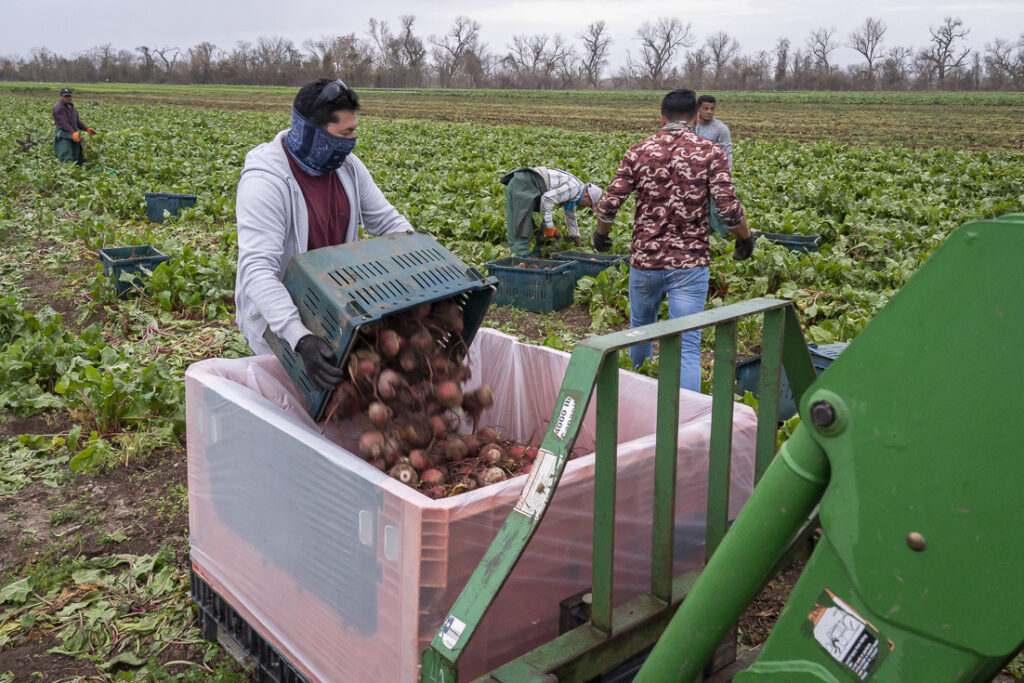 If the quality of the greens is less desirable, beets get "topped" and harvested in bulk. Luckily, a few insect holes in the greens doesn't bother the roots one bit. Photo by Scott David Gordon.
If the quality of the greens is less desirable, beets get "topped" and harvested in bulk. Luckily, a few insect holes in the greens doesn't bother the roots one bit. Photo by Scott David Gordon.
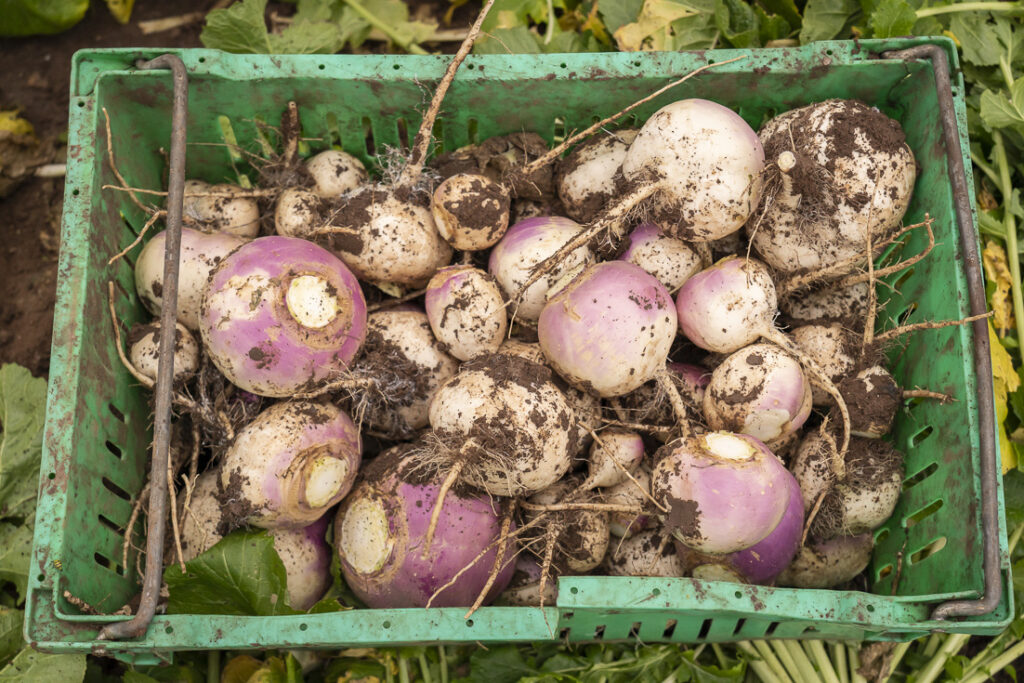 Purple top turnips in all shapes and sizes. Photo by Scott David Gordon.
Purple top turnips in all shapes and sizes. Photo by Scott David Gordon.
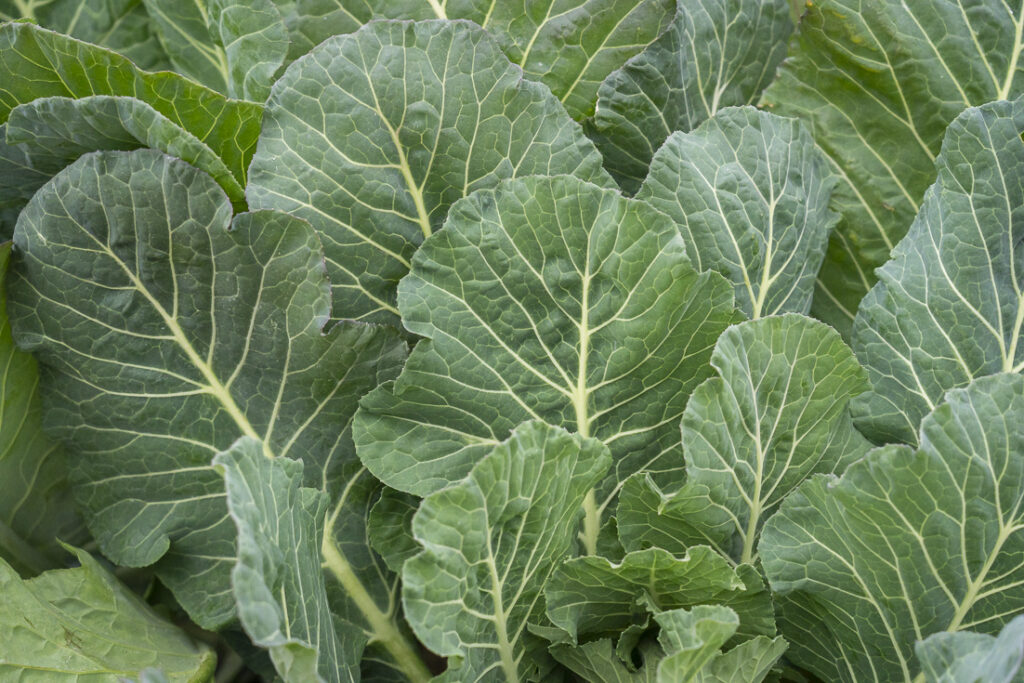 Collard fans. Photo by Scott David Gordon.
Collard fans. Photo by Scott David Gordon.
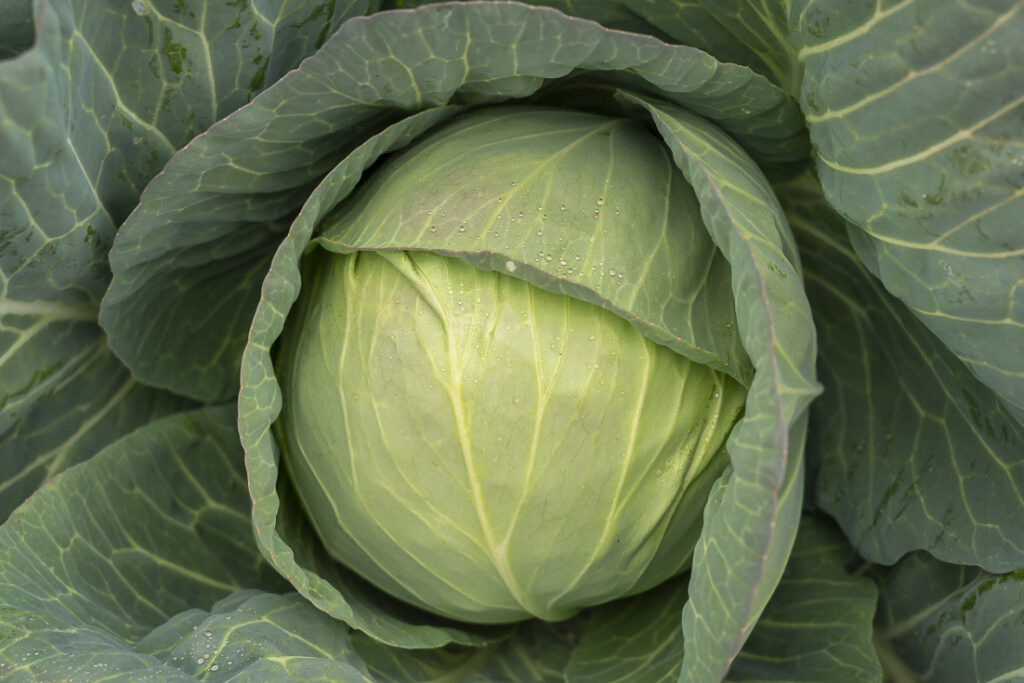 Did you read last week's blog post on brassicas? DId you know that a head of cabbage is just an enlarged terminal bud? Photo by Scott David Gordon.
Did you read last week's blog post on brassicas? DId you know that a head of cabbage is just an enlarged terminal bud? Photo by Scott David Gordon.
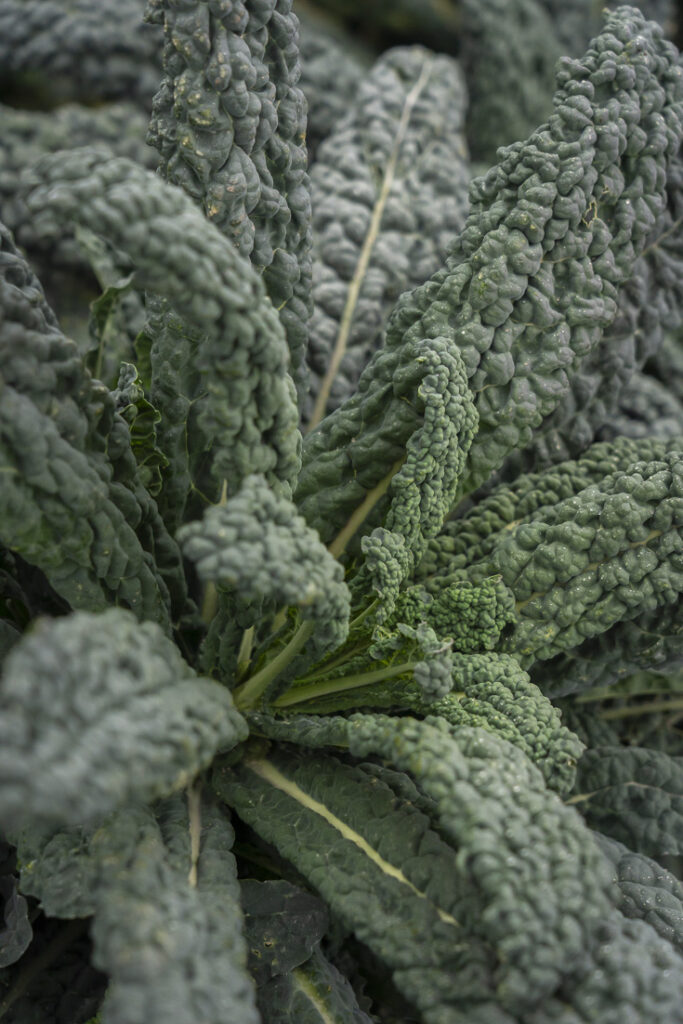 Speaking of Brassicas, believe it or not, this dino kale and a head of green cabbage are actually the same species of plant. Whereas the cabbage was selectively bread for a large bud, kale was bred for large leaves. Photo by Scott David Gordon.
Speaking of Brassicas, believe it or not, this dino kale and a head of green cabbage are actually the same species of plant. Whereas the cabbage was selectively bread for a large bud, kale was bred for large leaves. Photo by Scott David Gordon.
 The kale that keeps on giving. These kale plants have been harvested off of throughout the whole fall and winter season, and there is plenty more to go. Photo by Scott David Gordon.
The kale that keeps on giving. These kale plants have been harvested off of throughout the whole fall and winter season, and there is plenty more to go. Photo by Scott David Gordon.
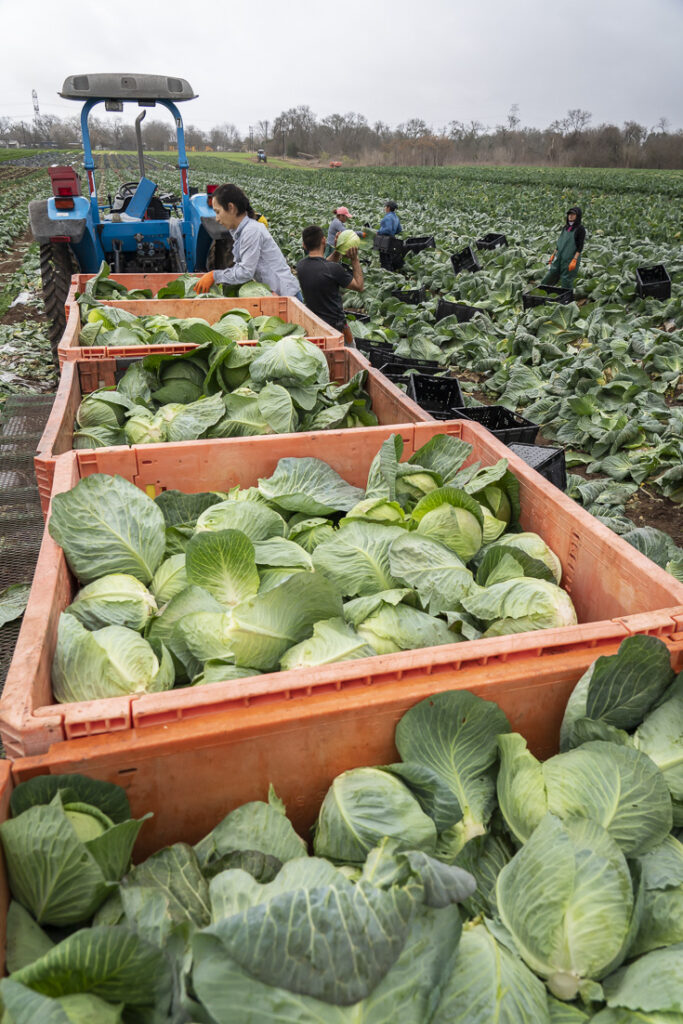 Cabbage patch women. Photo by Scott David Gordon.
Cabbage patch women. Photo by Scott David Gordon.
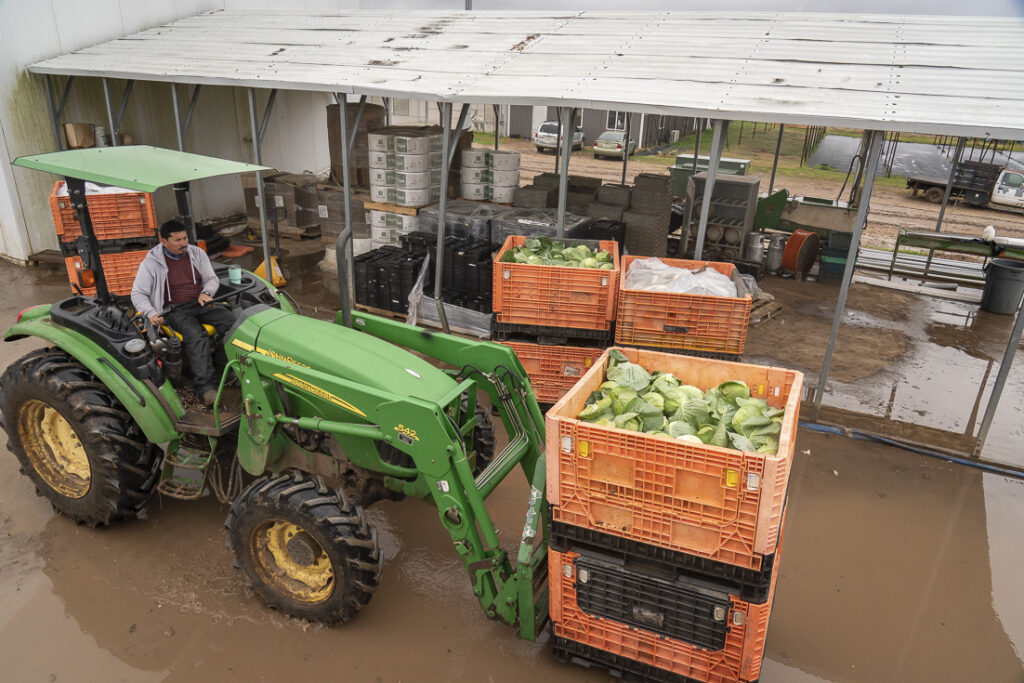 Vicente uses the John Deere to skillfully stack the bulk bins of cabbage before loading them into the cooler. Photo by Scott David Gordon.
Vicente uses the John Deere to skillfully stack the bulk bins of cabbage before loading them into the cooler. Photo by Scott David Gordon.
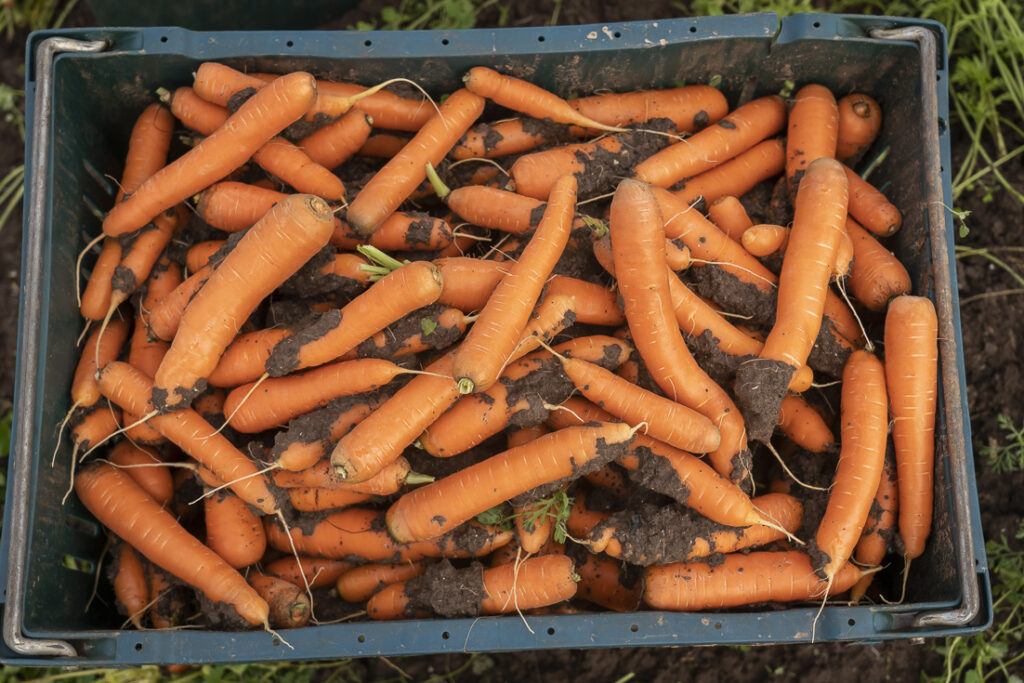 So orange, they almost look fake. Photo by Scott David Gordon.
So orange, they almost look fake. Photo by Scott David Gordon.
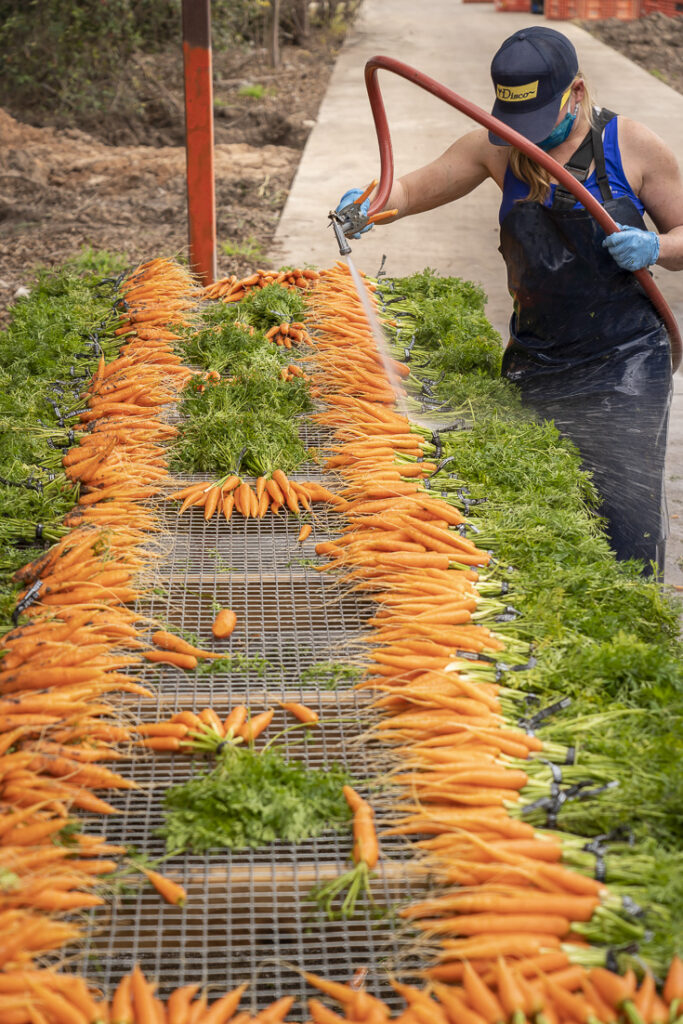 Ginger in ultimate carrot concentration. Photo by Scott David Gordon.
Ginger in ultimate carrot concentration. Photo by Scott David Gordon.
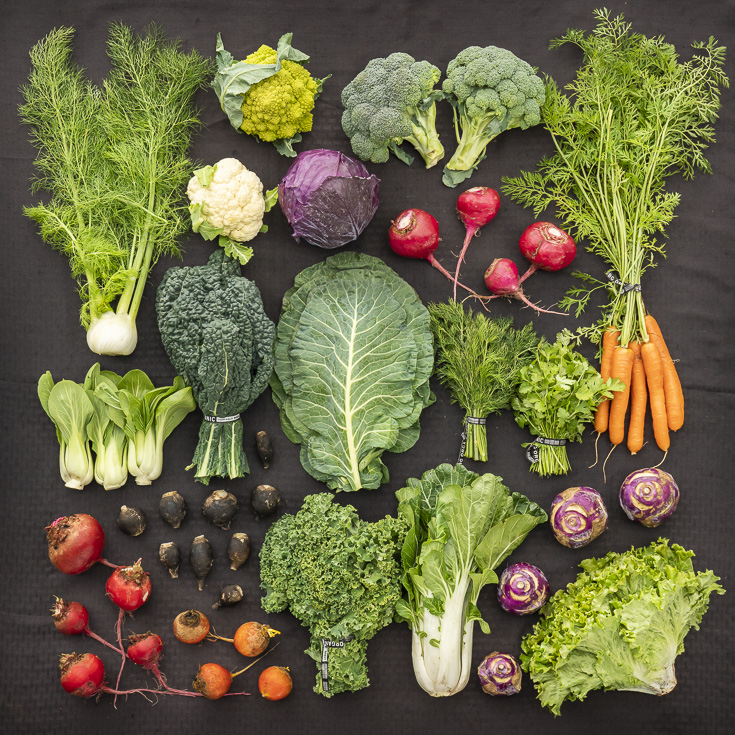 CSA box dreams. Photo by Scott David Gordon.
CSA box dreams. Photo by Scott David Gordon.
FIVE RECIPES FOR A FRESH START
01/22/21 — Ada Broussard
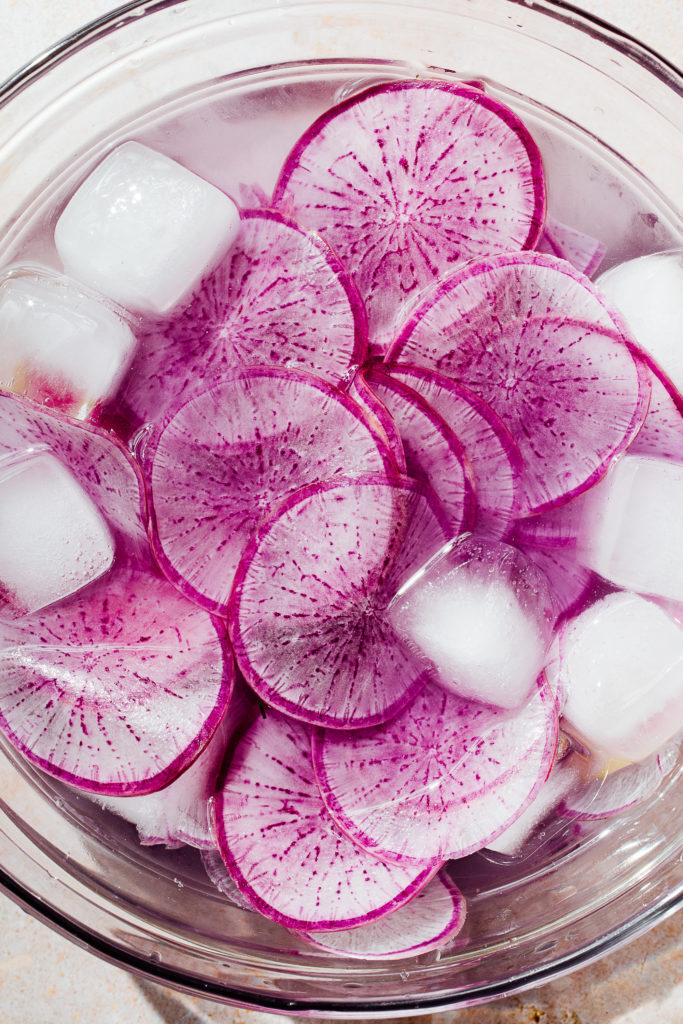 Purple daikons chillin' and crispin'. Photo and recipe by Mackenzie Smith Kelley.
Purple daikons chillin' and crispin'. Photo and recipe by Mackenzie Smith Kelley.
Is it just us, or do things feel fresher and lighter? Like 2021 can, in fact, be the year where we achieve some goals, love our neighbors, and support our farmers. Our rubber boots feel light despite the years of mud, and the seasons ahead looks bright. We’re farmers, and so we can’t help but approach the impending months with a feeling of optimism and excitement. Our greenhouse is about to be standing room only, thousands and thousands of seeds, tucked away in tiny cells, prodded to germinate and produce not only a bountiful spring harvest for the farm but also a vast inventory for our spring transplant sale (which will happen both online and in-person, at our greenhouse). It’s not too early to begin prepping your garden spaces! In celebration of these feelings of levity and bountiful opportunity, we thought we’d share 5 light recipes to inspire your plate and your path. It’s Texas salad season, after all!
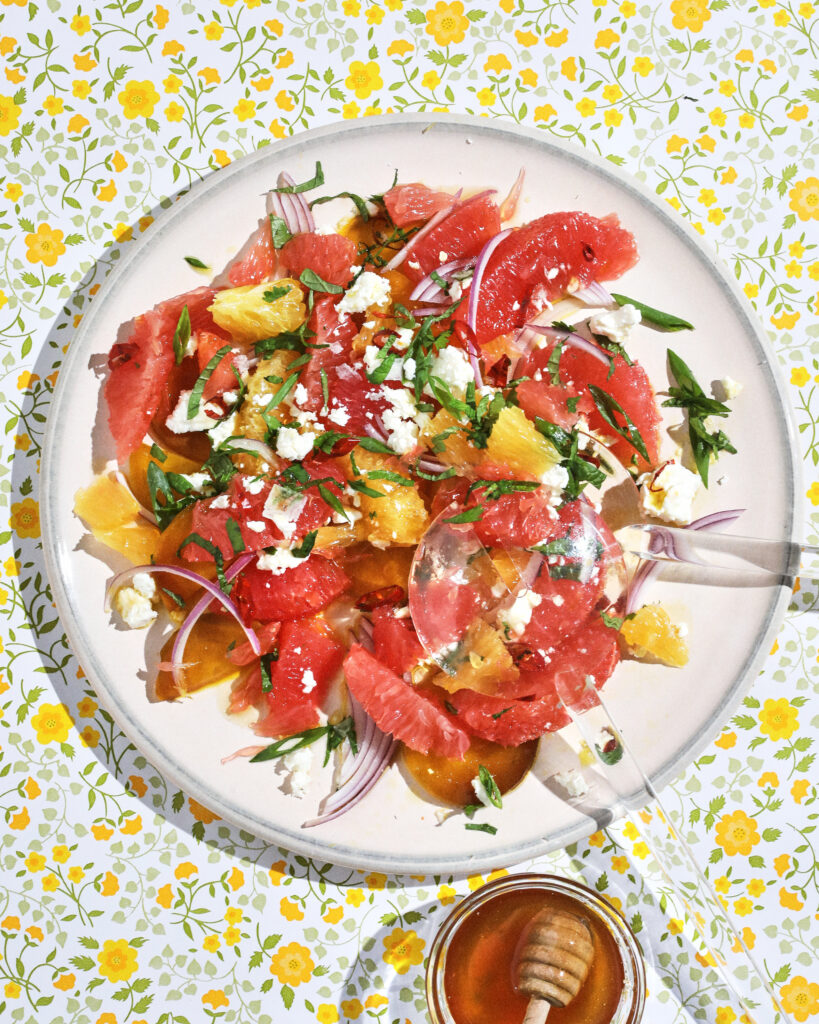 Sunshine salad story and photo by Mackenzie Smith Kelley. All Rights Reserved
Sunshine salad story and photo by Mackenzie Smith Kelley. All Rights Reserved
SUNSHINE SALAD
In addition to being salad season, it’s also citrus season and here at JBG we have access to the freshest Texas citrus harvested in the Rio Grande Valley. This citrus-salad recipe is also a story about Covid, which feels timely and important, and so we don’t mind sharing for the second week in a row.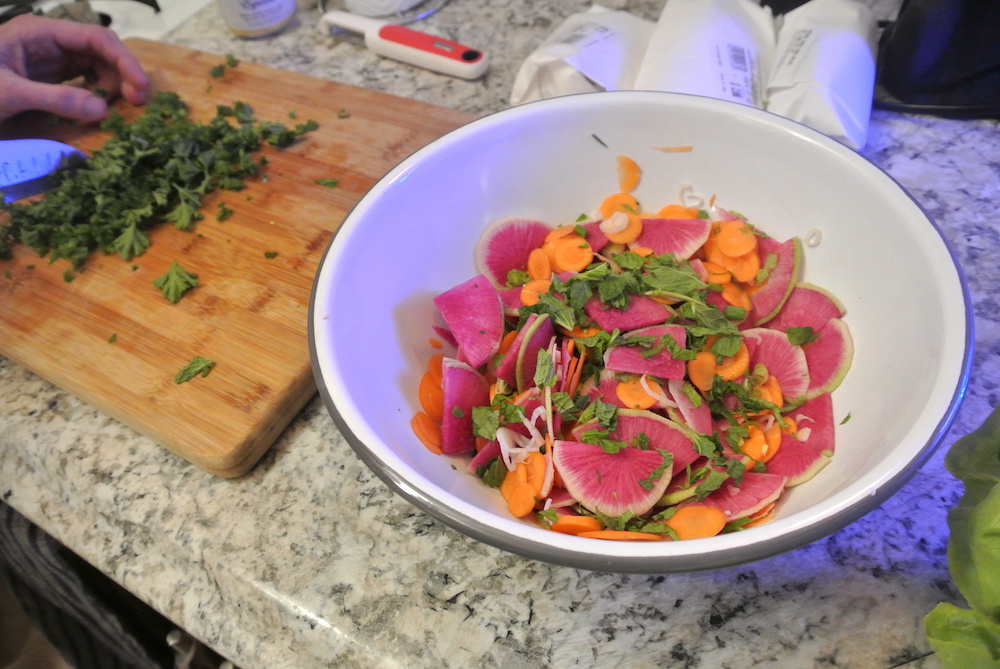 Photo and recipe by the dynamic duo, Heydon and Isaac.
Photo and recipe by the dynamic duo, Heydon and Isaac.
QUICK AND EASY LATE FALL SALAD
Despite the name, this salad will also work in the late winter. It’s been a mild season, and so many of our greens, roots, and herbs are still top-notch. This salad features a cohesive meeting of all of the above.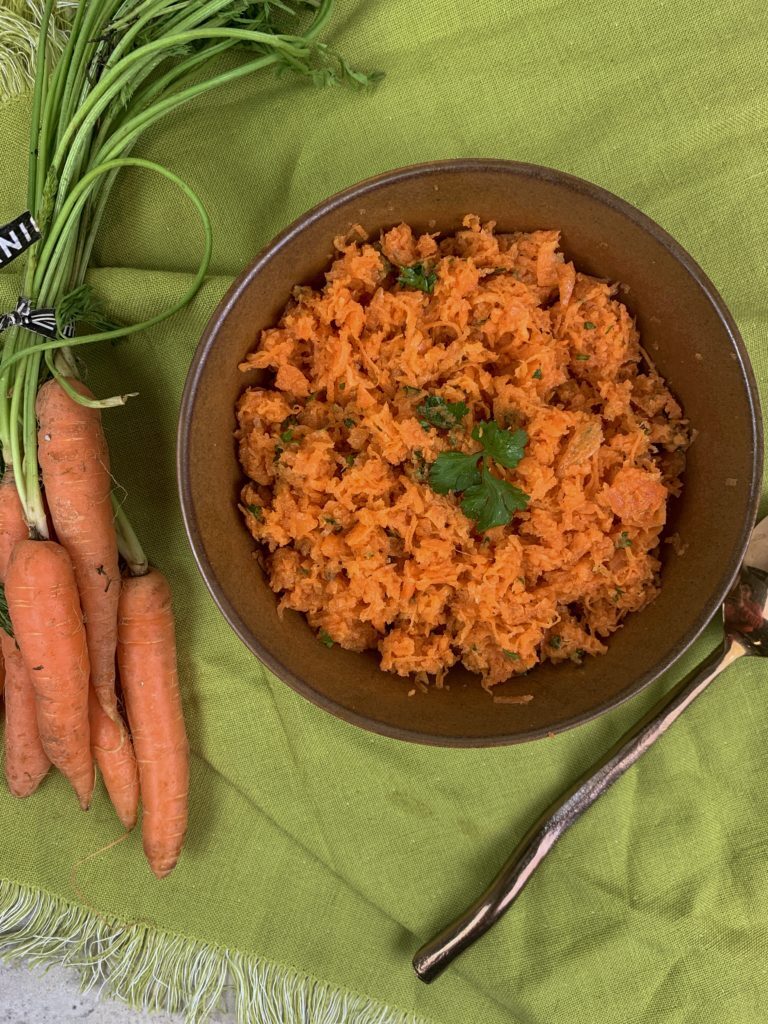 Photo and recipe by The Migoni Kitchen.
Photo and recipe by The Migoni Kitchen.
FRENCH GRATED CARROT SALAD
We love a recipe with a story, as well as one with a short ingredients list. This salad is inspired by Summer Migoni’s summers in France, visiting her grandparents. Here in Texas, carrots are a cool-season crop, so now is the time to make your own memories. Bon appétit.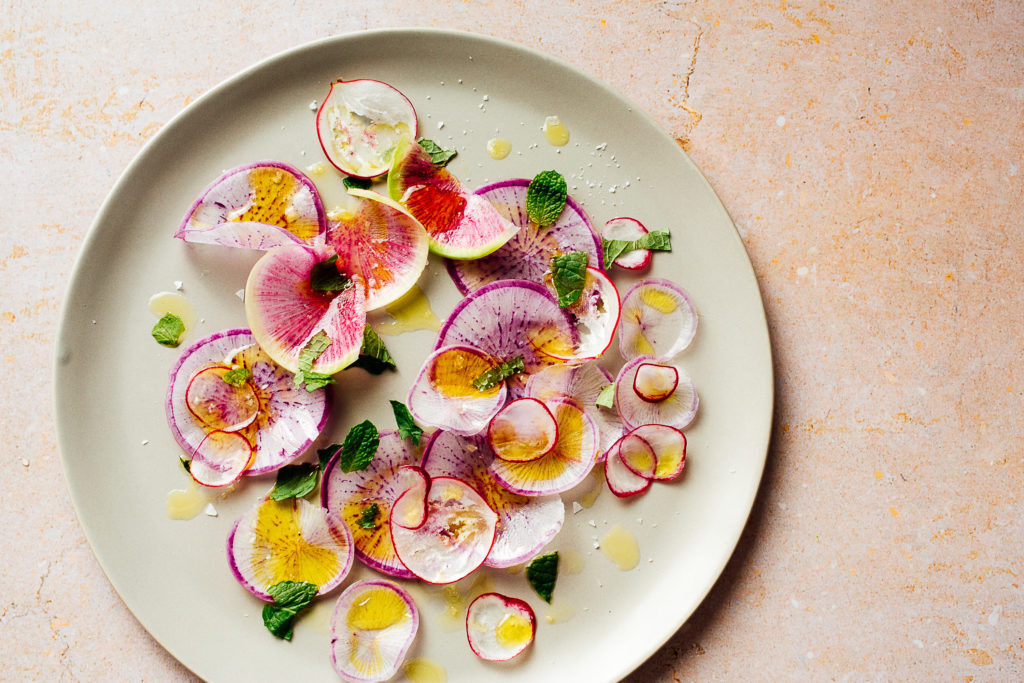 Plate assemblage and photo by Mackenzie Smith Kelley. All Rights Reserved.
Plate assemblage and photo by Mackenzie Smith Kelley. All Rights Reserved.
RADISH SALAD
We know you’ve been inundated with radishes lately, and we bet you’ve been topping all of your favorite dishes with the crunch and pep that they provide. But have you let your radishes shine this season, starring in their own show? This salad recipe will show you how simple it can be.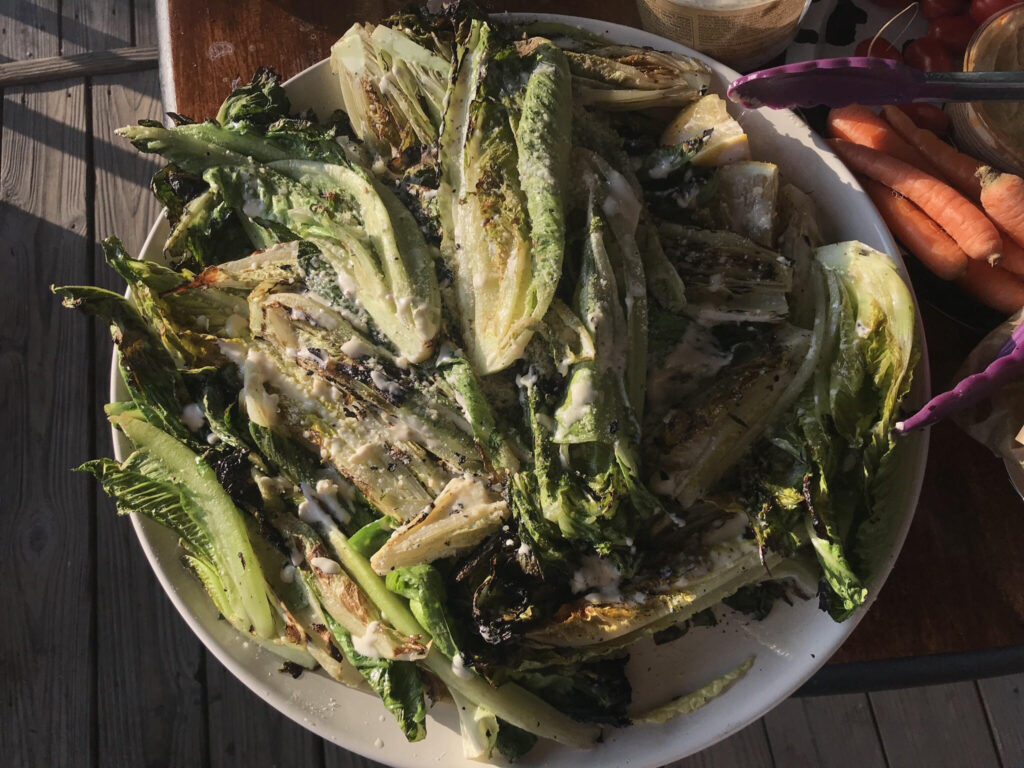
CESAR SALAD TWO WAYS
Is there anything more satisfying than a crisp, creamy, and umami-packed Cesar salad? Yes: it’s this salad prepared two ways, both versions with a homemade Cesar dressing that you could drink.CSA BOX CONTENTS WEEK OF JAN 18TH
01/15/21 — Farm
 CSA Box Contents Week Of Jan 18th
CSA Box Contents Week Of Jan 18th
Individual: Purple Cabbage, Baby Bok Choy, 2lb Carrot, Broccoli, Collard Greens, Fennel
Small: Purple Cabbage, Orange Carrot, Broccoli, Dinosaur Kale, Kohlrabi, Beet, Collard Greens, Farmer's Choice Herb
Medium: Purple Cabbage, Orange Carrot, Kohlrabi, Chioggia Beet, Bok Choy, Lettuce, Farmer's Choice Herb, Scarlett Turnip, farmer's Choice Kale, Collard Greens
Large: Purple Cabbage, Orange Carrot, Baby Bok Choy, Broccoli, Kohlrabi, Chioggia Beet, Collard Greens, Curly Kale, Lettuce, Farmer's Choice Herb, Daikon Radish, Cauliflower
WHAT ARE BRASSICAS, EXACTLY?
01/15/21 — Ada Broussard
As farm people, the word “Brassicas” is a regular player in our working dictionary of botany terms and tractor parts. Brassicas this, and Brassicas that. It’s a fun word to say and is particularly useful because it describes a large group of crops we grow. Seeing as you’re reading a farm blog right now, chances are you’re a lover of seasonal vegetables and a locavore, too. Does “Brassica” roll off your tongue with the confidence of a vegetable farmer? We think it should. Read on and you’ll realize that you already know these cruciferous vegetables. If you’re eating from a CSA box or JBG market haul, big and baby Brassicas alike have no doubt been on your plate more often this winter than not.
![]() Brenton with a few Brassicas.
Brenton with a few Brassicas.
Brassica is a genus of plants in the mustard family, or Brassicaceae in Latin, whose members are informally referred to as cruciferous vegetables, not to be confused with a crucifer, which has something to do with carrying a cross. The Brassica family contains many species and subspecies, several of which are responsible for growing some of the world’s most important agricultural crops. Brassicas love the cool weather, making them a late fall, winter, and early spring crop here in Central Texas. We push the seasonal windows with some of our Brassicas, but really - their time to shine is right this very instant.
So what the heck actually are Brassicas? The list of cruciferous vegetables we grow is long: kohlrabi, brussels sprouts, cabbages (all of them), broccoli, cauliflower, romanesco, turnips, bok choy, kale, collards, mustard greens, radishes, rutabaga, arugula, and all the diverse and specialty versions of those things you see on our spray tables. Did we forget one? Maybe… Brassicas rule over our winter crop plan with a partisan authority. Each one of these distinct but closely related vegetables was bred over the course of around 10,000 years by enterprising farmers all over the world making Brassicas one of the oldest cultivated crops we know of.
![]()
![]() We went to Brenton's Instagram (@farmerbrenton) because we know there was one photo of him with "the biggest brussel sprout" he's ever seen. We quickly realized that Brenton's Instagram is truly just a series of photos of Brenton with Brassicas over the years. He poses with no other plant family, it seems.
We went to Brenton's Instagram (@farmerbrenton) because we know there was one photo of him with "the biggest brussel sprout" he's ever seen. We quickly realized that Brenton's Instagram is truly just a series of photos of Brenton with Brassicas over the years. He poses with no other plant family, it seems.
Perhaps the most fascinating species of Brassica is Brassica oleracea which has undergone several rounds of domestication selection, all stemming (get it) from the same wild progenitor. If you’re interested in a botanical deep dive of this species, check out this blog post titled “The extraordinary diversity of Brassica oleracea” by Jeanne L. D. Osnas, a Ph.D. plant ecologist and evolutionary biologist. Who loves to cook. (Really, it’s an incredible blog.) Jeanne writes, “Some species have undergone the domestication process multiple times, and with some of these species, each domestication effort has focused on amplifying different structures of the plant...Such is the case with Brassica oleracea. The wild plant is a weedy little herb that prefers to grow on limestone outcroppings all around the coastal Mediterranean region. It is a biennial plant that uses food reserves stored over the winter in its rosette of leaves to produce a spike of a few yellow flowers at the end of its second summer before dying”.
Get ready to have your mind blown. Brassica oleracea makes up 9 of the vegetables we grow at JBG including red and green cabbage, broccoli, cauliflower, romanesco, Brussels sprouts (none this season, sorry), collards, kales, Savoy cabbage, and kohlrabi. Have you ever marveled at how Brussels sprouts just look like tiny cabbages? Or noticed that kohlrabi leaves taste a hell of a lot like collards? Deep down, you know that broccoli and cauliflower are deeply connected, but why does it all feel so familiar? It’s because it’s all the same plant! Check out the nifty chart below for a refresher on exactly what part of Brassica oleracea was selected to yield some of your favorite winter veggies.
![]() Graphic from Business Insider. One plant, many vegetables.
Graphic from Business Insider. One plant, many vegetables.
![]() Apparently, there is a meme for everything.
Apparently, there is a meme for everything.
![]()
We’re literally brimming in Brassicas right now, and each and everyone has an interesting evolution from a wild mustard weed blowing in the wind to a starchy root crop (turnip) or spicy leaf (arugula) or a bouquet of buds (broccoli). Enjoy your little Brassicals before it’s hot outside and they’ve flown the coop. Thanks for reading!
![]() Brassicas on Brassicas on Brassicas.
Brassicas on Brassicas on Brassicas.
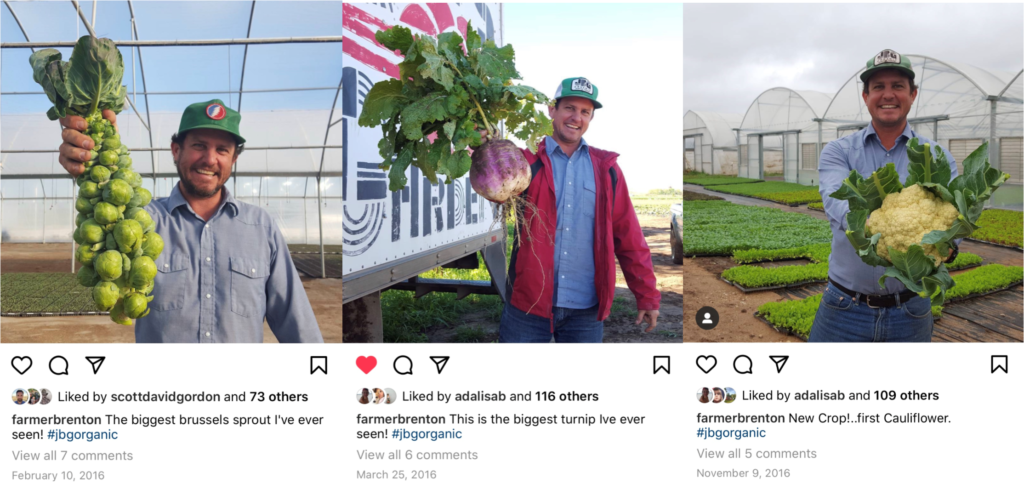 Brenton with a few Brassicas.
Brenton with a few Brassicas.
Brassica is a genus of plants in the mustard family, or Brassicaceae in Latin, whose members are informally referred to as cruciferous vegetables, not to be confused with a crucifer, which has something to do with carrying a cross. The Brassica family contains many species and subspecies, several of which are responsible for growing some of the world’s most important agricultural crops. Brassicas love the cool weather, making them a late fall, winter, and early spring crop here in Central Texas. We push the seasonal windows with some of our Brassicas, but really - their time to shine is right this very instant.
So what the heck actually are Brassicas? The list of cruciferous vegetables we grow is long: kohlrabi, brussels sprouts, cabbages (all of them), broccoli, cauliflower, romanesco, turnips, bok choy, kale, collards, mustard greens, radishes, rutabaga, arugula, and all the diverse and specialty versions of those things you see on our spray tables. Did we forget one? Maybe… Brassicas rule over our winter crop plan with a partisan authority. Each one of these distinct but closely related vegetables was bred over the course of around 10,000 years by enterprising farmers all over the world making Brassicas one of the oldest cultivated crops we know of.
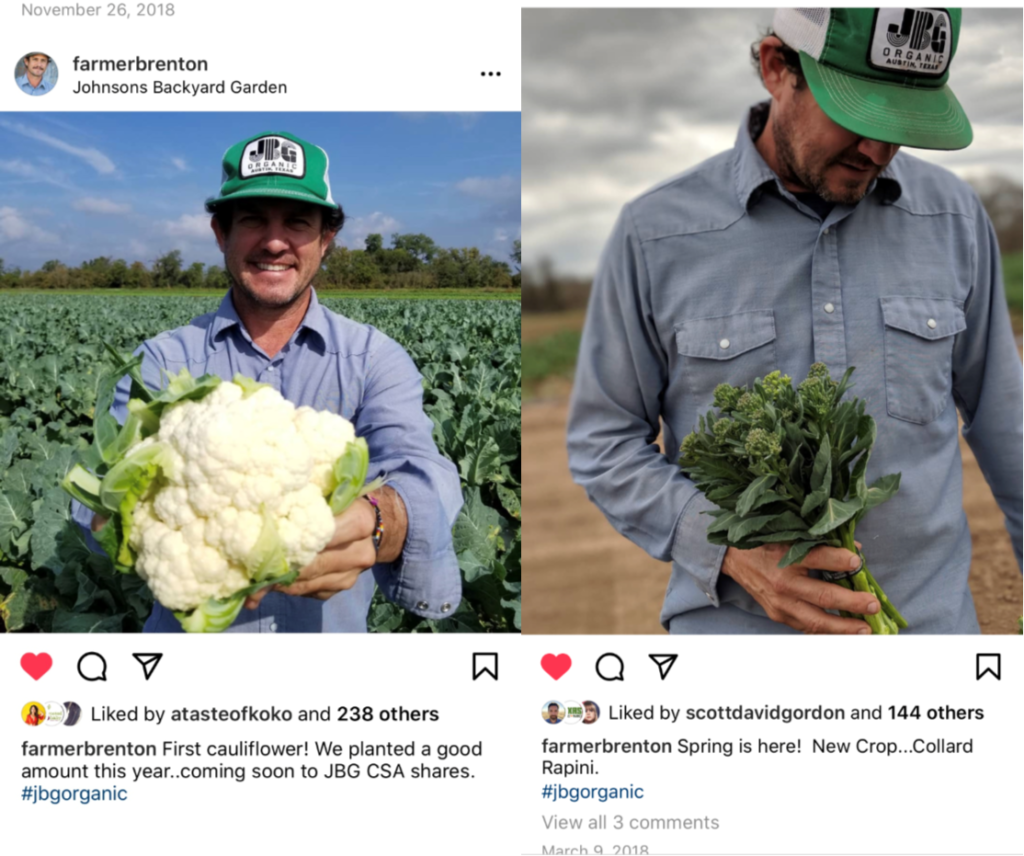
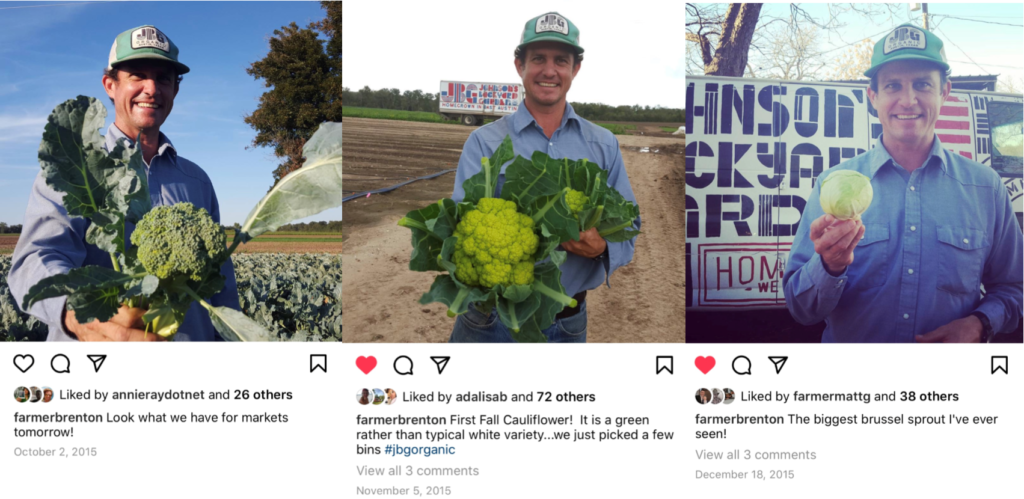 We went to Brenton's Instagram (@farmerbrenton) because we know there was one photo of him with "the biggest brussel sprout" he's ever seen. We quickly realized that Brenton's Instagram is truly just a series of photos of Brenton with Brassicas over the years. He poses with no other plant family, it seems.
We went to Brenton's Instagram (@farmerbrenton) because we know there was one photo of him with "the biggest brussel sprout" he's ever seen. We quickly realized that Brenton's Instagram is truly just a series of photos of Brenton with Brassicas over the years. He poses with no other plant family, it seems.
Perhaps the most fascinating species of Brassica is Brassica oleracea which has undergone several rounds of domestication selection, all stemming (get it) from the same wild progenitor. If you’re interested in a botanical deep dive of this species, check out this blog post titled “The extraordinary diversity of Brassica oleracea” by Jeanne L. D. Osnas, a Ph.D. plant ecologist and evolutionary biologist. Who loves to cook. (Really, it’s an incredible blog.) Jeanne writes, “Some species have undergone the domestication process multiple times, and with some of these species, each domestication effort has focused on amplifying different structures of the plant...Such is the case with Brassica oleracea. The wild plant is a weedy little herb that prefers to grow on limestone outcroppings all around the coastal Mediterranean region. It is a biennial plant that uses food reserves stored over the winter in its rosette of leaves to produce a spike of a few yellow flowers at the end of its second summer before dying”.
Get ready to have your mind blown. Brassica oleracea makes up 9 of the vegetables we grow at JBG including red and green cabbage, broccoli, cauliflower, romanesco, Brussels sprouts (none this season, sorry), collards, kales, Savoy cabbage, and kohlrabi. Have you ever marveled at how Brussels sprouts just look like tiny cabbages? Or noticed that kohlrabi leaves taste a hell of a lot like collards? Deep down, you know that broccoli and cauliflower are deeply connected, but why does it all feel so familiar? It’s because it’s all the same plant! Check out the nifty chart below for a refresher on exactly what part of Brassica oleracea was selected to yield some of your favorite winter veggies.
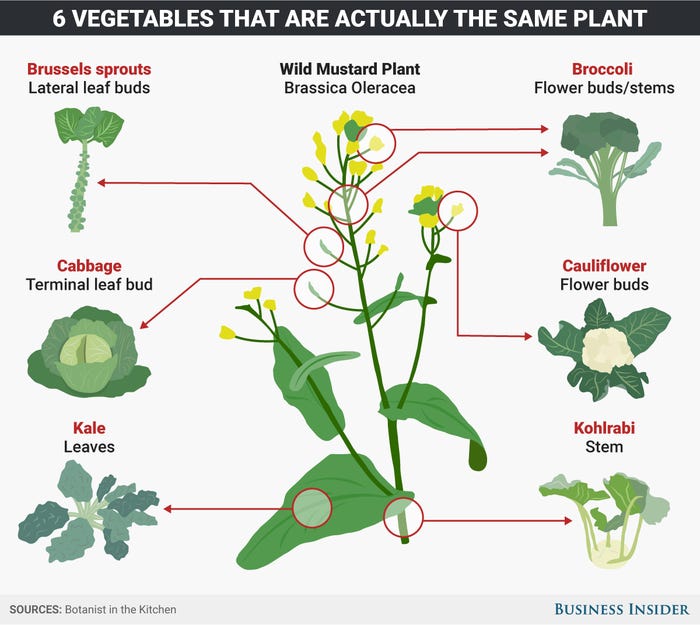 Graphic from Business Insider. One plant, many vegetables.
Graphic from Business Insider. One plant, many vegetables.
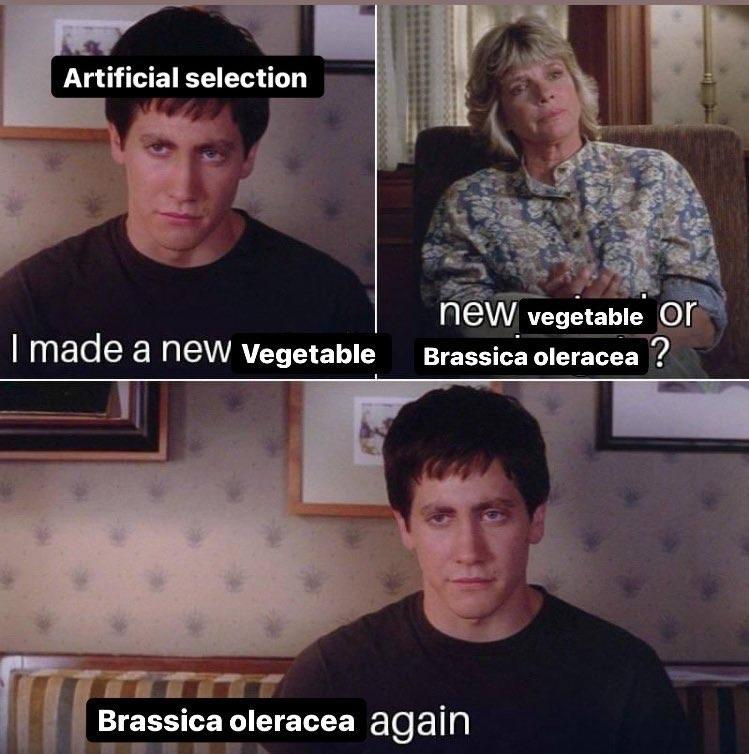 Apparently, there is a meme for everything.
Apparently, there is a meme for everything.

We’re literally brimming in Brassicas right now, and each and everyone has an interesting evolution from a wild mustard weed blowing in the wind to a starchy root crop (turnip) or spicy leaf (arugula) or a bouquet of buds (broccoli). Enjoy your little Brassicals before it’s hot outside and they’ve flown the coop. Thanks for reading!
 Brassicas on Brassicas on Brassicas.
Brassicas on Brassicas on Brassicas.SUNSHINE SALAD
01/14/21 — Ada Broussard
 All Rights Reserved
All Rights Reserved
Photo and Story by Mackenzie Smith Kelley.
Last Tuesday, I took a PCR Covid test in preparation for a photoshoot I would be traveling for on Saturday. On Friday I received the results, fully expecting them to be negative before leaving town the next day. Unfortunately, that was not the case. The rapid test I took on Friday came back negative.
If I had just used the rapid test, left town and rode in the car with Maite, the food stylist for the photoshoot, then joined a crew full of people on set, I could have infected Maite and an entire group of people in another city.
Thankfully my symptoms have been relatively mild. We are ok. I am not doing great, but I am ok. Sleeping for 4-8 hours during the day, nagging headache, nausea. No respiratory issues.
I still can’t pinpoint where I contracted the virus, as we have taken every recommended precaution— and then some, to protect ourselves and our pod.
Echoing the words of Kristen Miglore, who found herself in a similar situation last month:
“I’m sharing this to add one more voice to the chorus of pleas: Take this more seriously than ever. Understand and honor the timelines of exposure, testing, and contagiousness. Whatever precautions you’ve let lapse over all these months—consider bringing them back. Lean on Zoom and FaceTime. Be patient—we will see each other again. Take care, for yourself, your loved ones, and our strained first responders.”
If you are counting on testing for an added level of safety before you are around other people, please consider skipping the rapid antigen test and building PCR tests into your schedule. It takes longer to receive the results, but in my case it is clearly worth the extra time. This article explains the difference between the two.
We are not even close to being out of the woods with this thing yet.
A few days before I received the dreaded positive PCR, began quarantine, and put myself to bed for a week, we got our CSA with an order citrus that included a big bag of oranges and a big bag of grapefruits. That afternoon, I made a sunny salad by supreming 2 of each citrus, sprinkling with confetti herbs, feta, dried chili and sea salt, then drizzling with olive oil and raw honey.
Symptoms didn’t really start to show up until after I received my positive test, and I haven’t had much of an appetite since then, but I have been forcing myself to drink a glass of OJ/grapefruit juice every day for all that locally grown vitamin C.
Below are the ingredients I used for the salad, but as always, I encourage you to use what you have and make it your own. Happy citrus season, y’all.
- 2 grapefruits, supremed
- 2 oranges, supreme
- 2 golden beets, steamed and sliced
- Mint & cilantro, chopped
- 2 scallions, thinly sliced
- Crumbled feta
- Drizzle of honey
- Drizzle of olive oil
- Dried chili pepper
- Flaky sea salt






 0 ITEMS IN CART
0 ITEMS IN CART 

